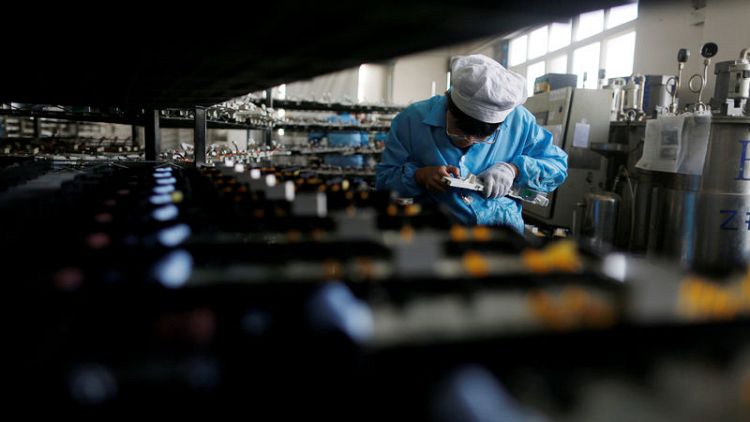BEIJING (Reuters) - China's vast manufacturing sector grew at the fastest pace in eight months in May, blowing past expectations and easing concerns about an economic slowdown even as risks from trade tensions with the United States and a crackdown on debt point to a bumpy ride ahead.
The official Purchasing Managers' Index (PMI) released on Thursday rose to 51.9 in May, from 51.4 in April, and remained well above the 50-point mark that separates growth from contraction for the 22nd straight month.
Analysts surveyed by Reuters had forecast the reading would dip slightly to 51.3.
Production expanded at the fastest rate in six months while growth in new orders rose to an 8-month high. Export orders also accelerated from the previous month.
The strong manufacturing sector readings defy concerns about an expected loss of momentum in Asia's powerhouse economy, as policymakers navigate debt risks and rocky trade relations with the United States.
Washington said on Tuesday that it was moving forward with its threat to apply tariffs on Chinese imports worth up to $50 billion, reviving fresh worries of a trade war between the world's two biggest economies. Trade tensions had ebbed only recently after Beijing pledged to buy more from the United States.
Hi-tech manufacturing activity rose to 54.8 in May, up from April's 53.8, despite pending U.S. tariff list under its intellectual property probe and restrictions on Chinese investments in the U.S.
China's economy grew at a slightly faster-than-expected pace of 6.8 percent in the first quarter. However, signs of stress have started to emerge with investment growth slowing to a near 20-year low in April and growth in retail sales sliding.
China has been tightening controls on riskier investments, the shadow banking business and speculation in the property sector, but has been keen to keep the broad economy well funded.
The industrial sector, a key source of jobs, remained in healthy shape, with profits growing at their fastest pace in six months, underpinned by continued strength in the steel sector.
Boosted by government infrastructure spending, a resilient housing market and unexpected strength in exports, China's manufacturers helped the economy deliver strong growth last year.
Economists still expect China's economic growth to slow to 6.5 percent this year from 6.9 percent in 2017, citing rising borrowing costs, tougher limits on industrial pollution and a crackdown on local governments' spending to keep their debt levels in check. <ECILT/CN>
A sister survey showed growth in China's service sector also picked up pace in May, with the official non-manufacturing Purchasing Managers' Index (PMI) edging up to 54.9 from 54.8 the previous month.
A sub-reading for construction activity, a major driver of growth in 2017, stood at 60.1 in May, down from 60.6 in April.
Chinese policymakers are counting on growth in services and consumption to rebalance their economic growth model from its heavy reliance on investment and exports. The services sector now accounts for over half of the economy, with rising wages giving Chinese consumers more spending clout.
A composite PMI covering both the manufacturing and services activity rose to 54.6 in May, from April's 54.1.
(Reporting by Stella Qiu and Ryan Woo; Editing by Shri Navaratnam)



